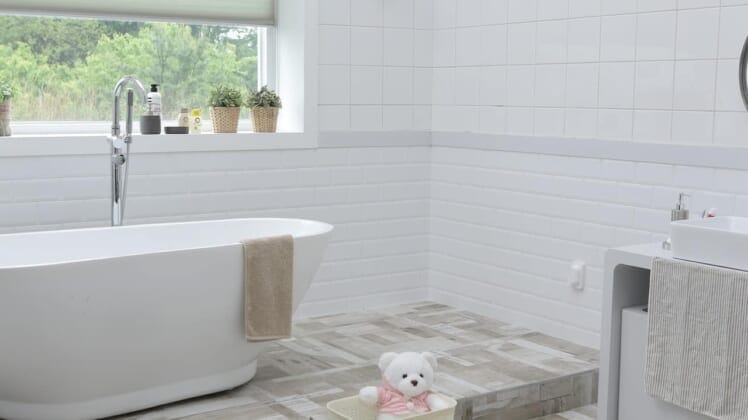
Potty training is a big milestone, but you want to get the timing right so it’s as quick and painless as possible — for both of you!
Before you jump right in, do the following:
- Bathroom etiquette and healthy habits: You may want to let them come in with you to show them how it’s done, from the mechanics of removing clothes to flushing the toilet and washing your hands.
- Make sure they’re ready: Teaching your child to use the toilet can be a huge confidence builder and is an exciting step toward greater independence. But pushing it on a child too soon can really prolong the process.
- Readiness Scale: Some kids start to show interest in potty training between 18 and 24 months, while others will be closer to 3 years old when they learn.
No matter where your child falls on the readiness scale, there are some signs to look out for when it comes to ditching the diapers. And always remember, reassure them, and don’t punish them for their potty training mistakes.
Related: How to help your children overcome adversity in life.
1. Showing interest
Your child may start to show interest in you or others using the bathroom by talking about it, wanting to join you, or mimicking your actions in the bathroom.
2. Pulling at their diaper
Whether your child is pulling at a wet or dry diaper because they are uncomfortable, or just demonstrating their ability to remove it on their own, those could be signs of potty-training readiness.
Related: 7 ways to prepare your finances for a baby.
3. Communicating the need
Some kids will flat out tell you when they have to or just have peed, while others may use body language by hiding in the corner to poop. Either way, they are demonstrating the ability to communicate their need to relieve themselves, as well as an understanding of their own body’s cues. Whatever the reason, it may be your cue!
4. Predictability
Somewhere between the ages of 18 months and 3 years, kids begin to poop on a more predictable schedule. This makes it easier to plan out your training schedule and get them to the toilet before it happens. Although many parents agree that teaching kids to pee on the potty seems to be the easier of the two, often kids take longer to be comfortable with moving their bowels on the toilet.
5. Staying dry
Having a dry diaper for two or more hours, waking up from naps, or sleeping with a dry diaper can be signs of readiness.
6. Having the skills
You may want to assess whether your child can understand simple directions and is able to pull up/down his or her own pants before diving into potty training.
Remember: Every child is different. You’ve probably been hearing this since you brought your little bundle home — and potty training is no different.

